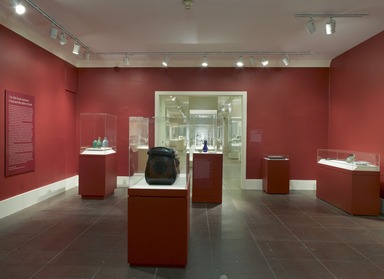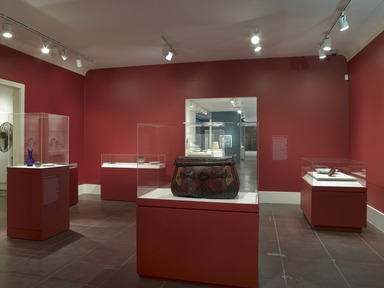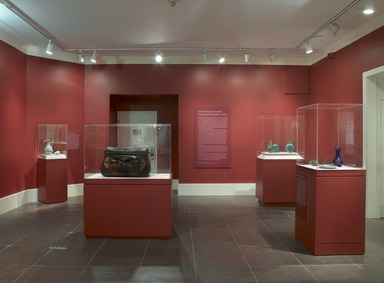

Silk Route Between China and the Islamic World, November 07, 2008 through May 01, 2009 (Image: DIG_E2008_Silk_Route_01_PS2.jpg Brooklyn Museum photograph, 2009)
Silk Route Between China and the Islamic World
DATES November 07, 2008 through May 01, 2009
ORGANIZING DEPARTMENT
Arts of the Islamic World
COLLECTIONS
Arts of the Islamic World
-
The Silk Route between China and the Islamic World
The Silk Route, which takes its name from the lavish silk textiles (among other trade goods) transported along its length from China to Venice, became famous in the West through tales of Marco Polo’s legendary travels in the late thirteenth century. Having covered the vast expanse of territory seen on the map here, the Venetian merchant reached Shangdu, or Xanadu (present-day Inner Mongolia) in 1275, arriving at the court of Qubilai Khan, the Mongol leader and founder of the Yuan dynasty (1271–1368). The Pax Mongolica, a Mongol trade agreement that protected merchants from the dangers of traveling the Silk Route, helped make possible not only his travels but continuous cultural exchanges between East and West during the medieval period.
Trade goods and gifts had been traveling in both directions either by sea or over the Silk Route (which in fact comprised several land routes) since the first century B.C.E. Contemporary accounts mention contact between Iran and China during the rule of the Sasanian and Tang dynasties (226–651 and 618–907, respectively), as well as under the weakening Byzantine Empire (330–1453).
The Islamic conquests of the eighth century and the Mongol invasions of the thirteenth century, however, propelled even more such cross-cultural connections, leading ultimately to the cultural transmission that inspired the production of the works in this gallery. Artists and objects—in the form of gifts, tribute, and merchandise—moving in both directions between China and the Islamic world carried designs and meanings that reflected the artistic traditions of several different cultures and religions, many of them in the region between China and Iran.
The objects displayed here come from the Brooklyn Museum’s collections of the arts of Asia and the Islamic world and attest to the several forms of cross-cultural transmission between these regions. They are grouped according to the various types of transmission they represent: “Movement along the Silk Route,” “Transfer of Motifs and Designs,” “Transmission of Technique,” and “Networks of Cultural Exchange.”
Today, when constantly evolving global politics and natural events result in ever-changing boundaries, it can be difficult to remember how connected the cultures of the East, West, and the regions in between once were. These connections continue to exist and can be witnessed not only in this gallery but in other parts of the Museum as well. They remind us that our customs are formed by several different cultural veins rather than a single one.
Ladan Akbarnia, PhD
Hagop Kevorkian Associate Curator of Islamic Art

